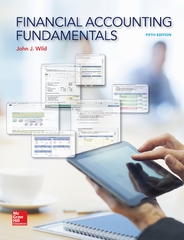Investment and Risk 1. Answer the following questions. a. Distinguish between risk and uncertainty. b. Classify the managers' attitudes towards risk. c. Identify several weaknesses of sensitivity analysis. d. Define probability and state how probability analysis can be used. e. Comment on how to classify security risks against the market using beta factor. 2. A company with a cost of capital of 8% is considering a project with the following cash flows: Year Initial investment Sales Revenue Variable costs Fixed costs $20,000 $18,000 $4,000 $2,000 $16,000 $6,000 $2,000 $14,000 $8,000 $2,000 Measure the sensitivity (in percentages) of the project to changes in the levels of expected initial investment, sales revenue, variable costs, fixed costs and total costs. 3. A company which has a cost of capital of 12% is considering a project with the following expected cash flows. Year Cash flow Discount factor at Present value $ 12% $ (43,000) 1.000 (43,000) 22,000 0.893 19,646 WN- 24,000 0.797 19,128 23,000 0.712 16.376 NPV = 12.150 The project seems to be worthwhile. However, because of the uncertainty about the future cash receipts, the management decides to reduce them to 'certainty-equivalents' by taking only 80%, 60% and 40% of the years 1, 2 and 3 cash flows respectively. The risk-free rate is 7%. On the basis of the information set out above, assess whether the project is worthwhile. 4. Sales volumes are expected to be either 12,000 units with 60% probability or they are expected to be 13,000 units. Price will either be $80 (0.7 probability) or else $50. Margins are expected to be 10% or 20% of sales with an even chance of each. Determine the expected total cost.ACC209 Financial Management 5. A company is appraising project which needs and initial investment of $18,000 and it can generate an annuity of $5,000 for 5 years. The cost of capital of the company is 10%. Required: a. Calculate the payback period and discounted payback period. b. Estimate Internal Rate of Return (IRR). c. Applying sensitivity analysis to the cost of capital, determine percentage change in the cost of capital that would cause the project NPV to fall to zero. 6. Muggins is evaluating a project to produce a new product. The product has an expected life of four years. Costs associated with the product are expected to be as follows. Variable costs per unit Labour: $30 Materials: 6 kg of material X at $1.64 per kg 3 units of component Y at $4.20 per unit Other variable costs: $4.40 Indirect cost each year Apportionment of head office salaries $118,000 Apportionment of general building occupancy $168,000 Other overheads $80,000, of which $60,000 represent additional cash expenditures (including rent of machinery) To manufacture the product, a product manager will have to be recruited at an annual gross cost of $34,000, and one assistant manager, whose current annual salary is $30,000, will be transferred from another department, where he will be replaced by a new appointee at a cost of $27,000 a year The necessary machinery will be rented. It will be installed in the company's factory. This will take up space that would otherwise be rented to another local company for $135,000 a year. This rent (for the factory space) is not subject to any uncertainty, as a binding four-year lease would be created. 60,000 kg of material X are already in inventory, at a purchase value of $98,400. They have no use other than the manufacture of the new product. Their disposal value is $50,000. All sales and costs will be on a cash basis and should be assumed to occur at the end of the year. Expected sales volumes of the product, at the proposed selling price of $125 a unit, are as follows. Year Expected sales (Units) 10,000 N 18,000 18,000 19,000 The company requires that certainty-equivalent cash flows have a positive NPV at a discount rate of 5%. Adjustment factors to arrive at certainty-equivalent amounts are as follows. Year Costs Benefits 1.1 0.9 1.3 0.8 AWN - 1.4 0.7 1.5 0.6 Required: Assess on financial grounds whether the project is acceptable








